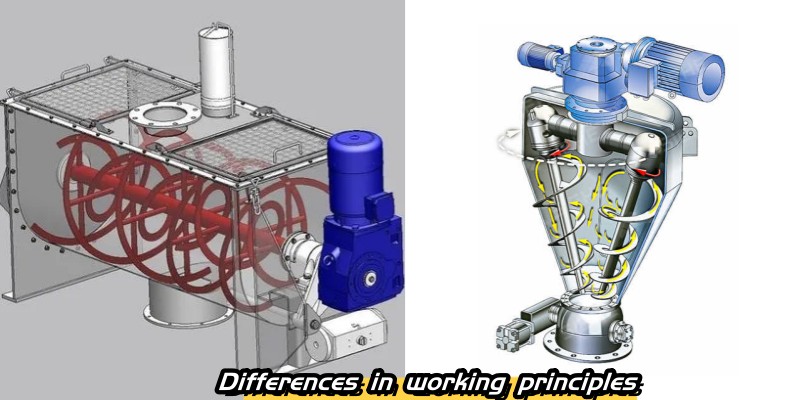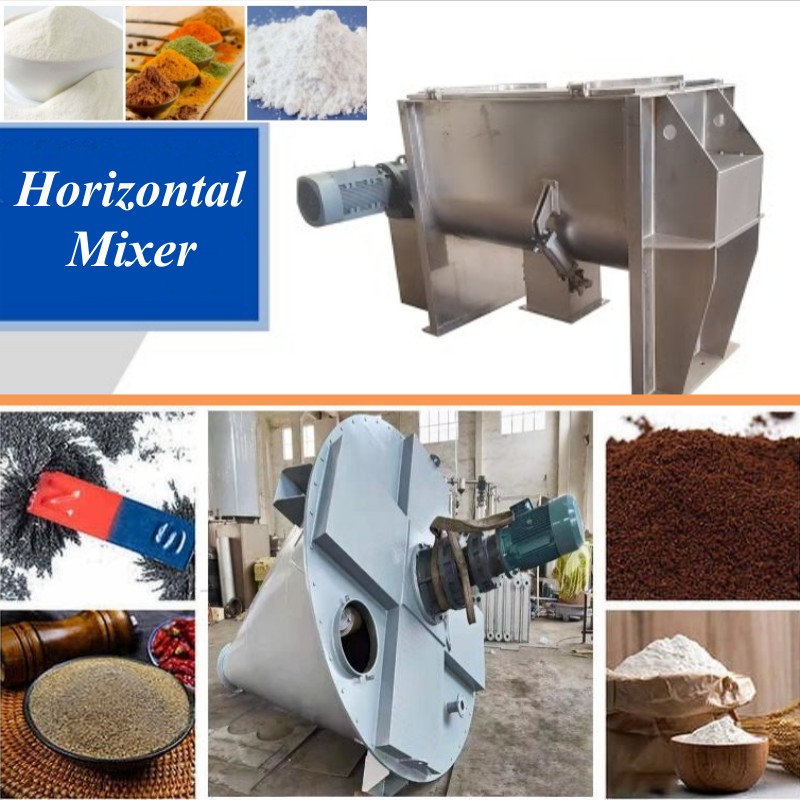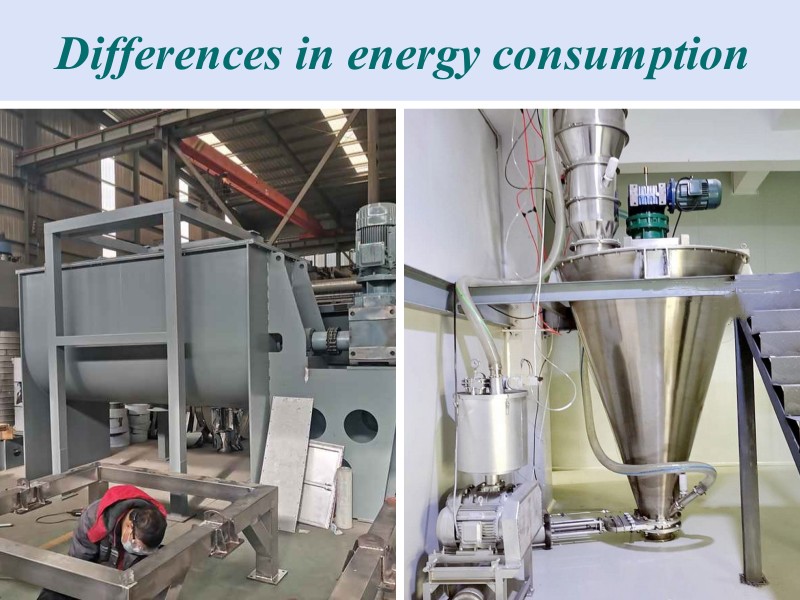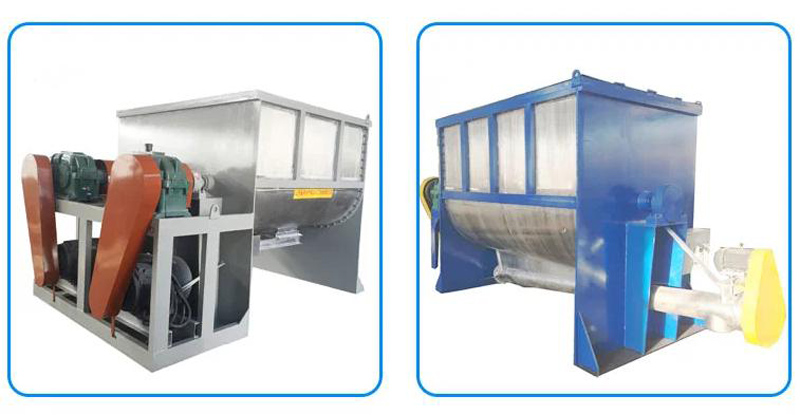Spiral mixers and horizontal mixers are both common industrial mixing equipment, but they are also different in some aspects. This article will cover the structure and advantages, working principle and scope of application, etc. Detailed introduction to the difference between spiral mixer and horizontal mixer.

The structural feature of the spiral mixer is that the main shaft is spiral-shaped, and the mixing barrel is located inside the main shaft. Mixing barrels usually have a cylindrical or conical shape with spiral blades inside. The advantages of the spiral mixer are uniform mixing effect and short mixing time. It is suitable for mixing granular or powdery materials.
In contrast, the structural feature of a horizontal mixer is that the main shaft is parallel to the ground and the mixing barrel is located on one side of the main shaft. Mixing barrels usually have a cylindrical or oval shape and are also equipped with stirring blades or stirring arms inside. The advantages of the horizontal mixer are that it is easy to operate, easy to clean and maintain, and is suitable for uniform mixing of powdery or viscous materials.

Spiral mixers and horizontal mixers also differ in their mixing principles. The spiral mixer achieves mixing through the rotation of spiral blades and the free fall of materials. The spiral blade introduces the material into the mixing barrel from the top, and then the material is mixed with the spiral blade under the action of free fall.
Horizontal mixers achieve mixing through the interaction between the rotation of the mixing blades or mixing arms and the materials. The mixing blade or mixing arm pushes the material from one side to the other, causing the material to form a circular flow in the mixing barrel, thereby achieving the purpose of uniform mixing.

Spiral mixers and horizontal mixers also differ in their scope of application. Spiral mixers are suitable for mixing granular or powdery materials and are commonly used in chemical, metallurgical, agricultural and food industries. Horizontal mixers are suitable for uniform mixing of powdery or viscous materials and are commonly used in pharmaceutical, chemical, building materials and food industries.

There are also differences in energy consumption between spiral mixers and horizontal mixers. Due to the spiral shape of the main shaft of the spiral mixer, the movement path of the material in the mixing barrel is longer, so more energy is consumed during the mixing process. Since the main axis of the horizontal mixer is parallel to the ground, the movement path of the material is relatively short and the energy consumption is relatively low.

To sum up, there are some differences between spiral mixers and horizontal mixers in terms of structure and advantages, working principles, scope of application and energy consumption. Choosing a suitable mixer needs to be determined based on factors such as material characteristics, production needs, and mixing effects to achieve the best mixing effects and production efficiency.

Address:China,Yanjin county forest park gate to the west 1000 meters north road.